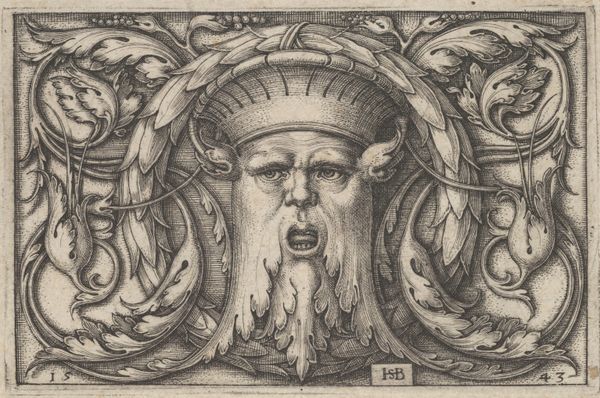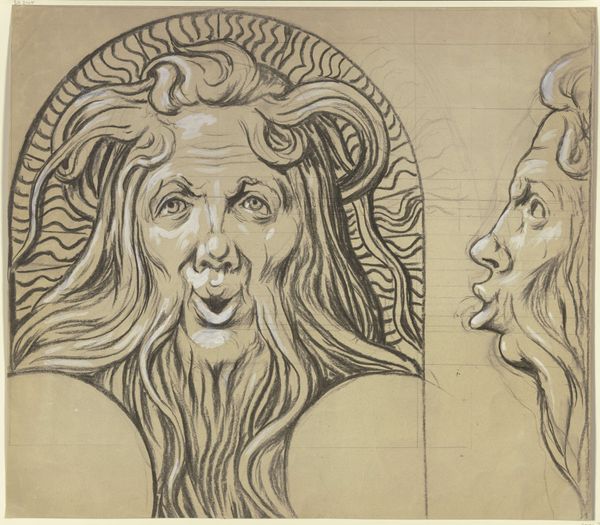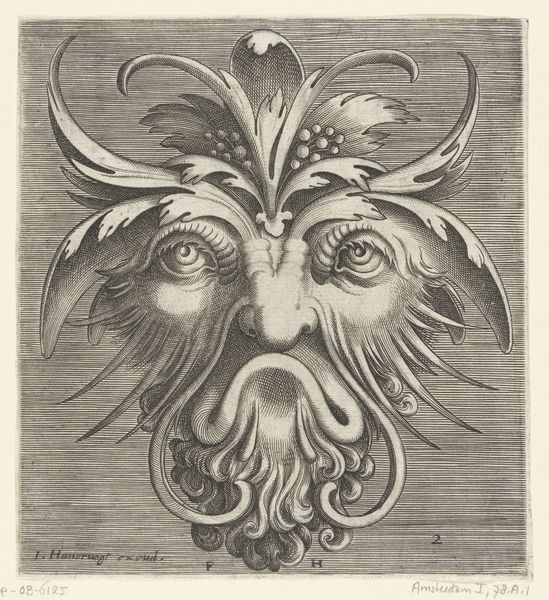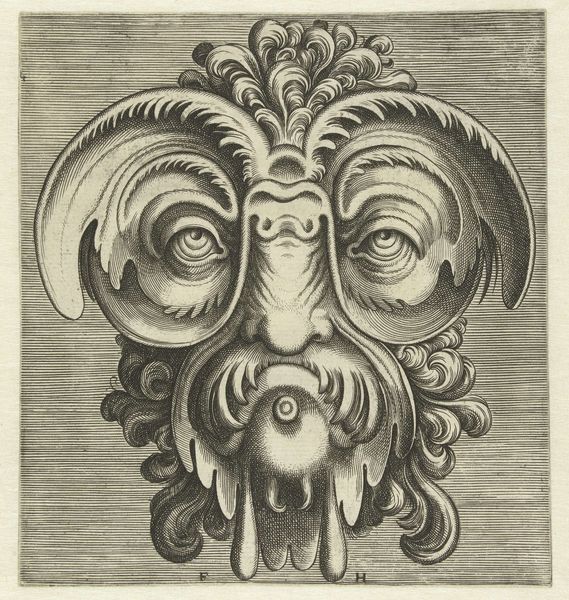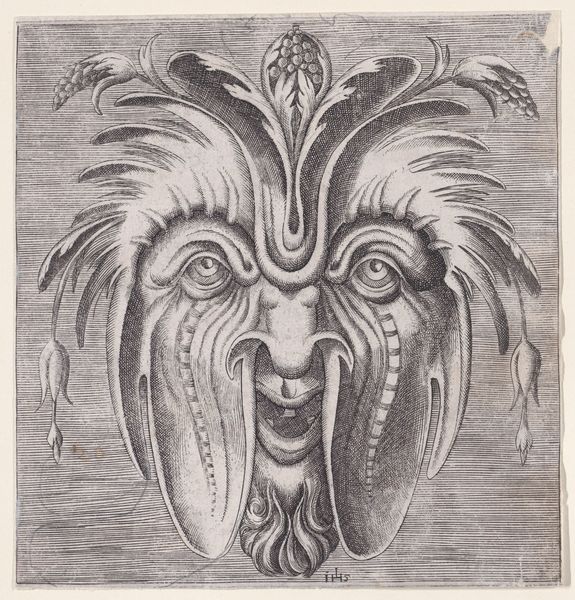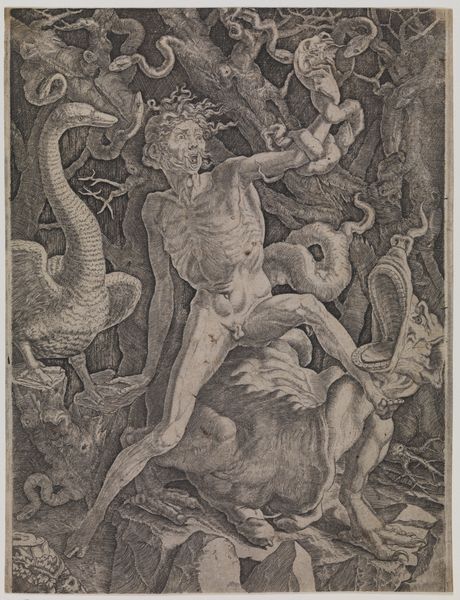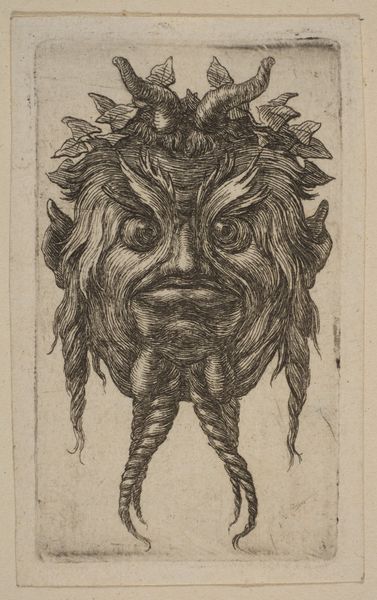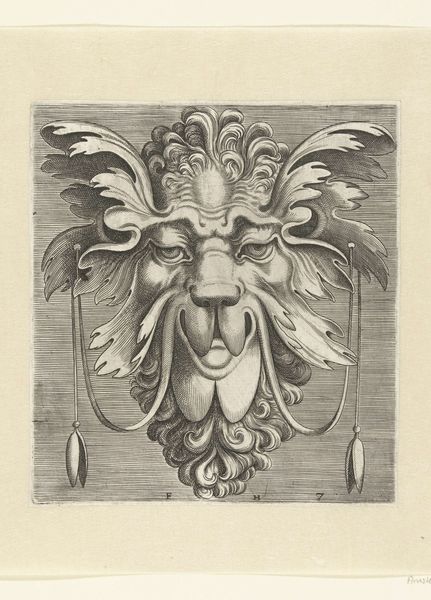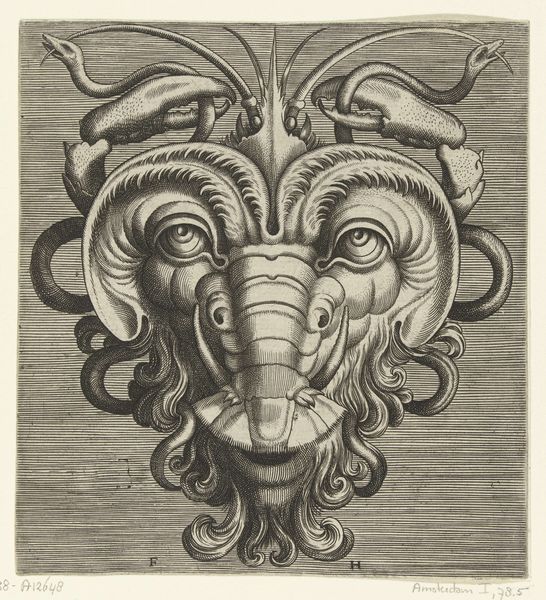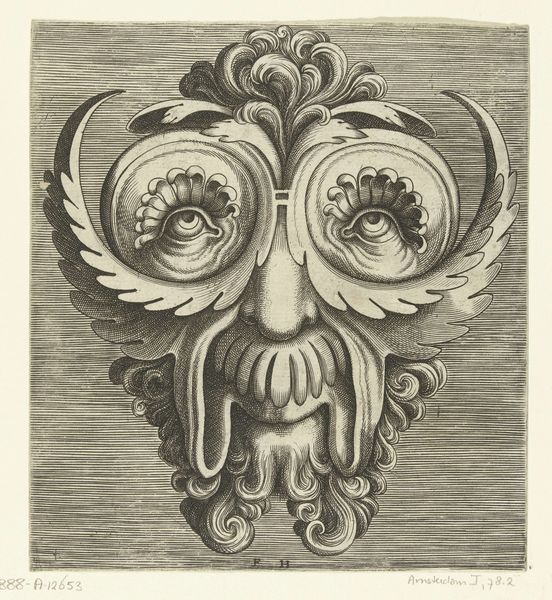
drawing, gouache, paper, chalk
#
drawing
#
art-nouveau
#
gouache
#
caricature
#
caricature
#
paper
#
chalk
#
symbolism
#
watercolour illustration
#
watercolor
Copyright: Public Domain
Hans Thoma created this work showing three satyr masks in pencil and watercolour. Classical mythology saw satyrs as part-human, part-goat woodland spirits embodying the untamed forces of nature. Thoma made this drawing in 1887, a period when artists across Europe were looking to myth to express primal desires and anxieties that lurked beneath the surface of modern industrial society. The three faces here may represent different aspects of this satyric nature. The garland of fruit at the bottom of the image suggests fertility, while the horns and beards invoke animalistic power. What's interesting is that the work is in the collection of the Städel Museum in Frankfurt, an institution that long promoted a conservative artistic agenda based on German folklore and nationalism. How might we square this with Thoma's turn to classical myth? By studying Thoma's writings and the Städel's exhibition history, we can better understand this artwork's place within the complex cultural politics of late 19th-century Germany.
Comments
No comments
Be the first to comment and join the conversation on the ultimate creative platform.
